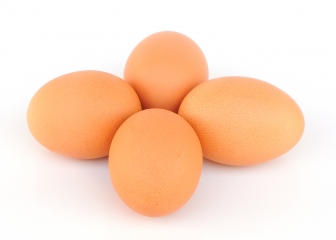Mayonnaise Making Tips from The NY Times
To make mayonnaise, you need to slowly beat oil into egg until an emulsion forms - that is, the oil molecules are uniformly dispersed in the egg and then hold there.Adding a teaspoon of water to the yolks before dripping in the oil helps create a stronger and more stable emulsion.
Lemon juice and vinegar accomplish the same thing, but if you add too much you run the risk of ending up with mayo that is too tart. A dollop of mustard can help create and hold an emulsion, too, which, beyond flavor, is why many mayonnaise recipes call for it.
Adding water also heightens the fluffy factor.
Another reason to add water is that it dilutes the yolk and opens up the complex matrix of lecithin and proteins it contains. The lecithin binds the oil droplets and the water in the yolk; that's the essence of a mayonnaise emulsion. As long as they are bound together, the emulsion is stable.
When you're using a blender or food processor, a little cold water can keep everything from overheating as it whirls - another frequent emulsion buster. To really bolster your chances of creating and holding an emulsion, use a whisk. Although mayonnaise can come together more easily in a food processor, it is prone to breaking. Overbeating, along with overheating, can cause the molecules to come unglued.
Initially the oil should be added to the yolk drop by drop; the emulsion should form when about a quarter of the oil is beaten in. Once that happens you can go a lot faster, increasing the drops to a steady stream.
Adapted from: Mayonnaise: Oil, Egg and a Drop of Magic
